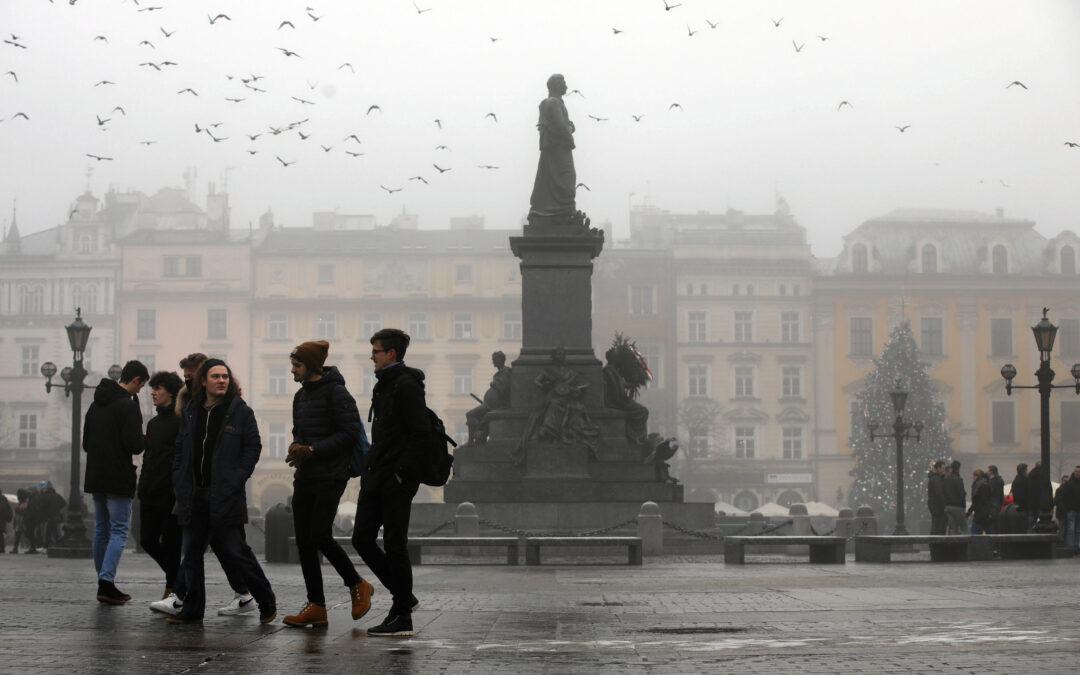Nowy Sącz has the European Union’s worst air, according to new data released by the European Environmental Agency (EEA). A further four Polish cities are among the ten most polluted in the ranking of 323 places across the bloc.
Poland has long battled with some of the continent’s most polluted air, which is estimated to cause around 50,000 premature deaths in the country annually.
Nowy Sącz, in the south of the country, was found by the EEA to have an annual mean concentration of 27.3 μg/m3 of PM2.5 (referring to small and particularly harmful airborne particulate matter) in 2019 and 2020. The World Health Organisation recommends a limit of 10 μg/m3.
Read the reports about the #EEA ranking of air pollution in cities in #Europe and wonder where your city stands? Turns out the fun bit is they have a European city air quality viewer out. Here's the public tableau dashboard for your enjoyment #OpenData https://t.co/uOcSTU8ess
— Compassion 🇪🇺 (@gmulder) June 17, 2021
That made Nowy Sącz one of only five EU cities to receive the worst rating of “very poor” air. Another was Zgierz (25.2μg/m3) in central Poland, which was fifth from last in the ranking.
Also in the bottom ten were Piotrków Trybunalski, Żory (both 24.9 μg/m3) and Kraków (24.7 μg/m3), Poland’s second largest city. Warsaw (17.0 μg/m3), the capital, as well as the major cities of Łódź (18.2 μg/m3), Wrocław (16.2 μg/m3) and Poznań (17.2 μg/m3) were also classified as having “poor” air.
The non-Polish cities in the bottom ten were Cremona, Vicenza, Brescia and Pavia in Italy, and Slavonski Brod in Croatia. At the opposite end of the ranking, Umeå in Sweden had the EU’s cleanest air, followed by Tampere in Finland and Funchal in Portugal.
“Fine particulate matter is the air pollutant with the highest impact on health in terms of premature death and disease,” notes the EEA. “Long term exposure…caus[es] serious health effects.”
A study last year found that children in one Polish city had over four times the level of harmful substances from air pollution in their bodies as their counterparts in France.
Over the last decade, there has been a growing campaign in Poland, led by NGOs and civil society groups, for the authorities – as well as the public themselves – to take steps to mitigate air pollution.
The biggest contributor to the problem is home heating, with many Poles burning coal – and sometimes, illegally, household waste – in domestic stoves. In 2019, Kraków became the first city in the country to ban the burning of wood and coal.
The city also launched an app that allows residents to not only monitor air quality but also to send the authorities geotagged photographs of buildings where they suspect illegal burning. Some municipalities in Poland have used drones to monitor smoke coming from chimneys.
The national government in 2018 launched a flagship “Clean Air” programme. However, the scheme, which subsidies the modernisation of heating systems and insulation, has suffered from low uptake amid administrative problems and insufficient incentives to encourage homeowners to upgrade.
Main image credit: Jakub Wlodek / Agencja Gazeta

Daniel Tilles is editor-in-chief of Notes from Poland. He has written on Polish affairs for a wide range of publications, including Foreign Policy, POLITICO Europe, EUobserver and Dziennik Gazeta Prawna.




















